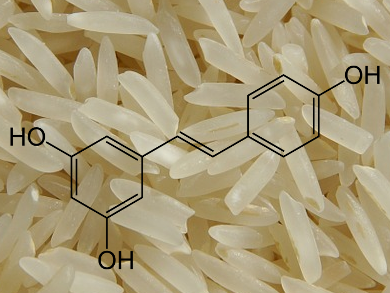Resveratrol (3,5,4′-trihydroxy-trans-stilbene) is an antioxidant found, e.g., in the skin of grapes and bluberries. It might have health benefits and therefore is increasingly used as a food supplement. Scientists have developed resveratrol-enriched rice (RR). It contains the stilbene synthase gene for resveratrol synthesis and the phosphinothricin-N-acetyltransferase gene for herbicide resistance (glufosinate tolerance. Min Sung Kim, Incheon National University, South Korea, and colleagues evaluated if there are metabolic changes in RR.
They analyzed 56 polar and nonpolar secondary metabolites with gas chromatography–mass spectrometry (GC/MS) in RR and conventional non-transgenic rice. Then they analyzed the principal components of the two rice varieties. Rice was cultivated during two seasons along three representative climatic regions in the Republic of Korea. The results showed that chemical composition was more influenced by growing year and location than genetic information. The results also showed that herbicide treatment did not affect the chemical composition of RR. In addition, statistical analysis showed that there were no significant differences in the biochemical structures of RR compared with the non-RR plants.
- Targeted metabolite profiling to evaluate unintended metabolic changes of genetic modification in resveratrol-enriched rice (Oryza sativa L.),
Min Sung Kim, So-Hyeon Baek, Sang Un Park, Kyung-Hoan Im, Jae Kwang Kim,
Appl. Biolog. Chem. 2017, 60(2), 205–214.
DOI: 10.1007/s13765-017-0265-0
